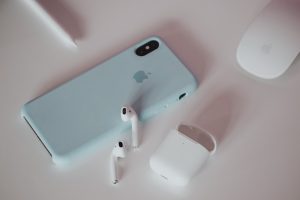By Traciana Graves
How elite performers use Physical Intelligence to make better choices in less time.
If you’re here as part of Day 4 of the Best Self and Life Mini Retreat, welcome! Today, we’re exploring how to turn your body’s signals into a strategic advantage.
Goldman Sachs CEO David Solomon credits his ability to DJ at major music festivals with improving his business decision-making. “When you’re reading a crowd of 50,000 people, you develop an intuitive sense for energy and timing that translates directly to boardroom dynamics,” he’s said in interviews.
He’s describing Physical Intelligence—the systematic use of embodied information to make faster, more accurate decisions under pressure.
While most executives are drowning in data, elite performers have discovered a competitive edge hiding in plain sight: their own nervous system.
The Executive Brain vs. The Strategic Body
Here’s what Harvard Business School won’t teach you: cognitive analysis is the slowest, least reliable part of your decision-making apparatus.
Dr. Antonio Damasio’s landmark research on somatic markers shows that patients with damaged emotion-processing centers can analyze pros and cons endlessly but struggle to make even simple decisions. Without physical signals—the subtle chest tightening, energy shifts, or expansive breathing—they get trapped in cognitive loops.
Your body processes complex environmental data and pattern recognition faster than any AI system currently available.
The vagus nerve, connecting your gut’s 500 million neurons directly to your brain, sends information upward at a rate that makes conscious analysis look glacial. When venture capitalists talk about “pattern recognition” in successful investing, they’re often describing this embodied intelligence without realizing it.
Your body processes complex environmental data and pattern recognition faster than any AI system currently available.
The Four Vectors of Physical Intelligence
Elite performers integrate body intelligence across four strategic dimensions:
Risk Assessment: Your nervous system detects threats—financial, reputational, operational—before rational analysis identifies them. That inexplicable hesitation before signing a partnership deal? It may be your system detecting misaligned incentives or cultural incompatibility.
Opportunity Recognition: Physical expansion, increased energy, or improved focus around certain people or projects often signals untapped potential. Many breakthrough innovations emerge from following these attraction signals rather than market research.
Resource Management: Your body continuously monitors energetic costs and capacity. Leaders who honor fatigue signals as resource allocation data—not weakness—design sustainable strategies that compound over time.
Timing Intelligence: Physical Intelligence excels at temporal pattern recognition. The right moment to launch, pivot, or exit often feels different in your body before market indicators confirm it.
The right moment to launch, pivot, or exit often feels different in your body before market indicators confirm it.
Beyond Intuition: Systematic Implementation
Physical Intelligence isn’t about following every impulse—it’s about upgrading your analytical framework with embodied data.
Elite performers create decision architectures that systematically integrate both streams of intelligence. They pause before major choices to notice physical responses, then investigate what their system might be detecting. When body signals contradict logical analysis, they dig deeper rather than defaulting to either extreme.
Consider how this applies to high-stakes situations: hiring key executives, entering new markets, or navigating crisis management. Traditional due diligence provides essential information. Physical Intelligence adds pattern recognition, timing sensitivity, and risk assessment that no external consultant can provide.
The most successful leaders I work with treat their body as they would treat their most sophisticated business intelligence platform—with attention, respect, and systematic integration into strategic planning.
The Competitive Advantage
While your competitors optimize for metrics and data points, Physical Intelligence gives you access to information they’re systematically ignoring.
You spot cultural misalignment in potential hires before it shows up in performance reviews. You recognize market shifts before they appear in quarterly reports. You identify strategic opportunities that look risky on paper but feel aligned with deeper market currents.
In environments where everyone has access to similar external data, your internal intelligence becomes the ultimate differentiator.
Your Strategic Edge Starts Now
Physical Intelligence isn’t a soft skill—it’s an advanced strategic capability that most executives never develop because they’ve been trained to override it.
The Fearless Listening® methodology makes this intelligence accessible through structured practices that you can integrate immediately into high-stakes decision-making. You learn to systematically access the strategic information your body has been processing all along.
The question isn’t whether your body is processing strategic information. It’s whether you’re sophisticated enough to access it systematically.
The founders and executives who will dominate the next decade won’t be those with the most data—they’ll be those who can integrate the highest quality information from both external and internal sources fastest.
Develop Your Physical Intelligence
If you’re ready to turn Physical Intelligence from concept into a systematic competitive advantage, the Best Self & Life Mini-Retreat provides the structured framework to develop these capabilities.
Over five days, you’ll learn to apply Fearless Listening® to real business scenarios, develop precision in reading your internal signals, and create decision architectures that integrate both analytical and embodied intelligence.
This isn’t theoretical—it’s a practical methodology that transforms how you navigate high-stakes leadership challenges.
[Explore the Best Self & Life Mini-Retreat here →]
With respect for your strategic sophistication,
Traciana






















0 Comments for “The Neuroscience of Gut Decisions: Why Your Body Knows Before Your Brain”